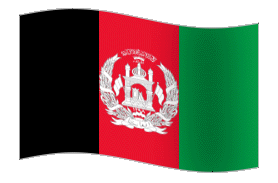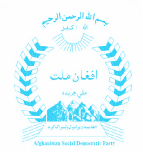دافغان ملت ملي مترقي ګوند

Afghanistan Social Democratic Party

Non-
By: Ajmal Shams
After a careful look into the tragic events and misfortunes of the past three decades in Afghanistan beginning with the Communist Coup of April 1978 followed by Soviet military intervention in December 1979, one is readily convinced that Pashtuns on both sides of the Durand Line have been the prime victims. It is true that Afghans in general have suffered tremendously by a perpetual bloody conflict that has shattered their lives in varying degrees. However, the Pashtuns in both Afghanistan and Pakhtunkhwa have been most severely impacted by the ongoing strife. As a consequence of the armed resistance against the Soviet occupation forces, almost two million Afghans, mainly Pashtuns, lost their lives. The spy agencies of the Communist regime in Kabul continued to perpetrate terrorist activities in Pakhtunkhwa which killed hundreds of Pashtuns both local and refugees from Afghanistan. Similarly, after the collapse of Dr. Najib’s regime, when the Mujahedeen came to power, the major battle grounds of the civil war were the Pashtun areas. Now, after decades, the legacy of this virtual massacre of Pashtuns still rages in the form of ongoing insurgency on both sides of the Durand Line.
The Taliban emerged in the early Nineties in the country’s south and gradually grabbed power in 1996. Their absolute majority being Pashtun triggered international propaganda against the entire Pashtun ethnicity. Pashtuns were portrayed as being against civilized culture that only believed in extremism. Whatever actions the Taliban committed were associated with the Pashtuns. Regrettably, the Pashtun character assassination has sustained to this day in one form or another. It is to be noted that the Taliban rarely committed actions that favored one ethnic group over the other and never identified themselves with being Pashtuns. Members of the Taliban from Badakhshan Province, the ethnic Tajik, were actively involved in the movement with some holding high ranking positions. Thus the perception of identifying Pashtuns with the Taliban or vice versa has no logical grounds.
The non-
Pashtuns have entrenched principles of resolving their conflicts among themselves and with others through dialogues and their traditional peace Jirgas. However, when there is legitimate need for the use of force, they are readily willing to rise up in arms. The pages of history, on one hand, illustrate Pashtuns’ valiant struggle, bravery and courage and on the other hand portray them also as inheritors of nearly five thousand years of a legacy of civilization that thrived between the great rivers of Amu and Indus. Among many of Pashtun’s heroes, a reflection on the life of Khushal Khan Khattak sheds enough light on the character of a typical Pashtun leader. Khushal Khan has been called a man of sword and a man of letter. For years, he fought Mughuls defending the rights of Pashtuns but was also second to none in terms of his literary achievements. His works have been inspiring writers and poets for the last four centuries.
The re-
It is an open secret now that the ongoing insurgency in the lands of the Pashtuns
is mainly driven by regional and global rivalries for gaining political influence
and economic superiority. Surprisingly, Afghanistan, due to its geo-
It is a crucial moment for the Pashtun political leadership as well as religious
and social intelligentsia to redefine and present the true image of Pashtuns as a
tolerant nation having a long cherished desire to live in peaceful co-
ASIA TIMES -
Copyright © Afghan Millat 2007-